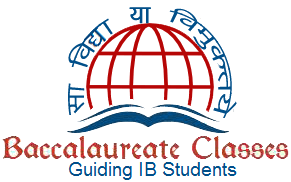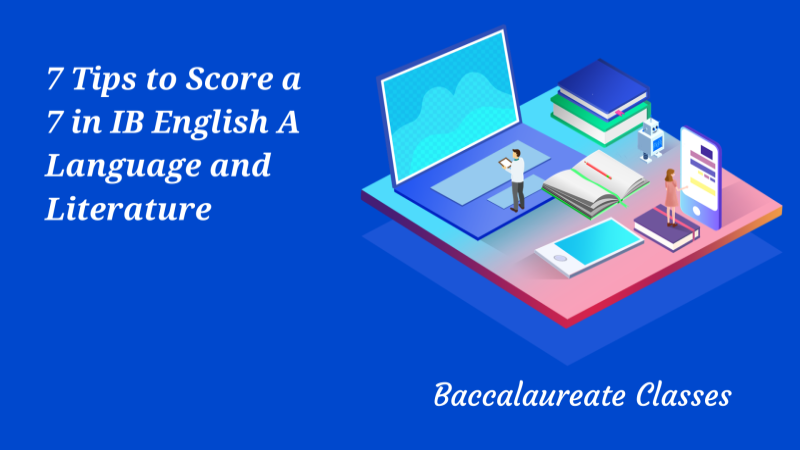OUR BLOG
7 Tips to Score a 7 in IB English A Language and Literature
Completing IB English A Language and Literature with a 7 on a 1-7 grade scale is not only a great way to enhance your college applications but it also opens up a range of opportunities in mass communication and media for learners. The broad scope of the course means that by engaging with literary texts, students develop the ability to reflect on conventions and assumptions within texts and develop an awareness of their language choices. Having said that, understanding a 16th-century text or a work in translation poses unique challenges. To overcome these, Baccalaureate Classes provides expert IB English tutors having several years of experiences who are equipped with helping students examine the texts from different perspectives, such as power or gender.
What’s Tested on the IB English Exam?
There are 4 ways in which you will be assessed. At the end of the course, you will sit for two exams. The first one i.e. Paper 1 requires you to analyse an unseen text. While SL students will write one commentary out of the two given non-literary texts, HL students are required to write an analysis of both the texts. In the second exam, both HL and SL learners will attempt a comparative essay on two literary texts that they've read during the diploma programme. In addition to this, HL students are required to write a 1200-1500 word HL essay on a literary or non-literary text. You are also assessed internally on several written tasks and spoken activities conducted in the classroom, such as presentations or discussions. The marks for further oral activities (FOA) and written tasks are moderated externally. Finally, in the second year of the course, you will also be asked to give an oral commentary individually.
How to Interpret Unseen Poetry?
1. FLIRT With the Poem:
Our IB online tutor suggests using the FLIRT approach to analyse a poem. The acronym stands for Form, Language, Imagery, Rhythm and Theme. For each section, you should make a Point, back it up with an Example and finish by explaining what purpose the example serves. For example, if you’ve identified the form of the poem as a sonnet or a ballad, make sure you quote lines from the poem that helped you identify the same and explain why the poet has chosen this form.
2. Work Out the Subject of the Poem:
Focus on the ideas and messages that are repeatedly stated in the given poem to draw the reader’s attention. Now think about the meaning of the poem, not just the obvious meaning of each word but what they imply beyond the literal. Our IB tutor argues that poets often use symbols to signify qualities and ideas by associating them with overt meanings. For example, the literal meaning of a serpent is a slithering reptile that makes a hissing sound. However, in the story of Genesis, a serpent is a symbol of the devil’s aspect of deception and deceit.
3. Equip Yourself With Descriptive Words:
While preparing for the exam, compile a list of adjectives of feelings and emotions to describe the mood and atmosphere of the poem as well as the tone and voice of the speaker. Our online IB English tutors ease the burden for the students by providing them with a ready-made template of mood and tone words that come in handy for the learners during their practice tests and exams.
How to Write an Analysis for Paper 1?
4. Apply the Big 5 Approach:
Structure your response to a non-literary text type i.e. blog, cartoon strip, advertisement, letter etc. using the big 5 approach. The big 5 approach entails understanding the effects of the following literary features: Audience and Purpose, Content and Theme, Tone and Mood, Stylistic Devices, and Structure. Our IB English tutors suggest you focus on how these aspects are used to create particular effects. Your analysis should be continuous and structured and should include relevant examples from the text.
5. Focus on Stylistic Elements:
While examining paper 1, our IB English online tutors believe that it is important to delineate a detailed description of the following stylistic elements;
- Register (level of formality of the language used)
- Syntax (length of sentences and how they’re constructed)
- Diction (word choice and its effect on the audience and purpose of the text)
- Layout (how writing, images and symbols are arranged)
How to Write a Comparative Essay for Paper 2?
6. Know Your Terminology:
Although flashcards are a bit dated, some of you may find that noting down key information helps you recall terms better. Our IB English tutors in India optimise apps like Quizlet to make customisable quizzes and flashcards suited to each student’s needs. They have found that using these apps helps them to cover a wide range of topics in a fun manner.
7. Develop a List of Similarities and Differences:
Our IB online tutors furnish the students with past papers to familiarise them with the basis of comparison. Once that is clear, they help learners think critically about the differences and similarities between the items being compared. For example, in “Great Expectations” by Charles Dickens, being a gentleman is a matter of morality than of position. On the other hand, in “The Tenant of Wildfell Hall” by Anne Bronte, being a gentleman is associated with the virtues of hard work and resilience than with luxury and indulgence. Once you’ve outlined these, you can write your thesis statement. A good thesis statement usually includes both similarities and differences.
In the face of Covid-19, several students have reached out to online IB English tutors at Baccalaureate Classes to understand how to produce an error-free written task, give a streamlined oral commentary, and seek advice on how to analyse an unseen and seen text. The tricks and hacks provided by our expert IB English online tutors will be useful not just for IB candidates but for anyone looking to improve their English communication skills.

